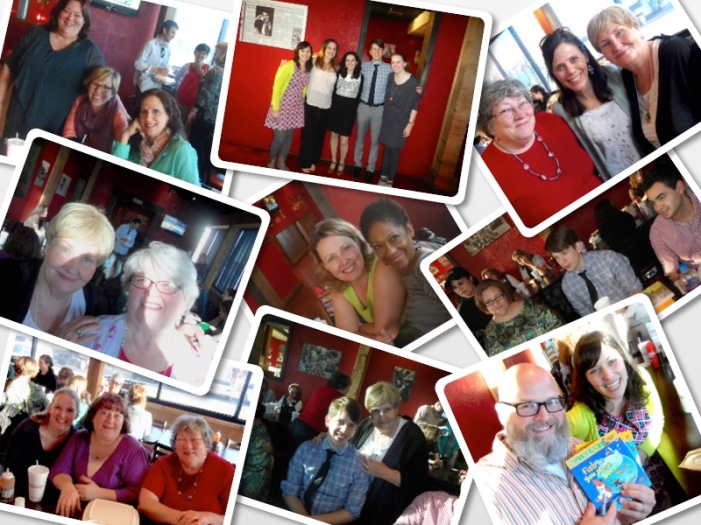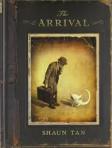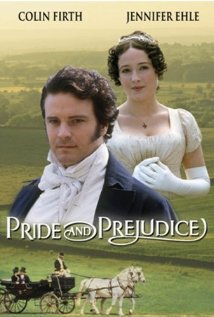Day One of Our Fall Retreat for Oklahoma SCBWI last month had something for everyone, with specific tracks for novel, illustration, and picture book that allowed you to focus on your area of interest. Day Two found us in the capable hands of Linda Urban, children’s book author and mad genius when it comes to dissecting what makes a book work.
 Linda Urban – Linda writes picture books and middle grade novels from subjects as varied as an angry mouse expressing emotion (MOUSE WAS MAD), a red-headed boy searching for independence (LITTLE RED HENRY), a girl who dreams of playing pianos only to end up with a wheezy organ (A CROOKED KIND OF PERFECT), and a girl who tries to fix a horrible mistake with a birthday wish (THE CENTER OF EVERYTHING). Urban’s characters are written with so much heart, yours will burst while reading about them.
Linda Urban – Linda writes picture books and middle grade novels from subjects as varied as an angry mouse expressing emotion (MOUSE WAS MAD), a red-headed boy searching for independence (LITTLE RED HENRY), a girl who dreams of playing pianos only to end up with a wheezy organ (A CROOKED KIND OF PERFECT), and a girl who tries to fix a horrible mistake with a birthday wish (THE CENTER OF EVERYTHING). Urban’s characters are written with so much heart, yours will burst while reading about them.
The focus of her revision intensive for the day was on voice and point of view. Of course, what is it that agents and editors always say they want in a story, and the one thing that everyone says is all but unteachable?
Voice!
Linda showed us how making the right choice with point of view can affect the voice of your story. Some POV choices bring readers in closer, while some give more distance and offer more flexibility.
Not all YA books have to be in 1st person, and not all Middle Grades have to be in 3rd person. Surprising, I know. Making a more thoughtful choice for your story is essential to giving it the greatest impact.
One specific example Linda gave to show how these two ideas work together is to consider if your character changes the way they express themselves in a moment of crisis. If so, how does POV shape this expression?
Interesting question, right?
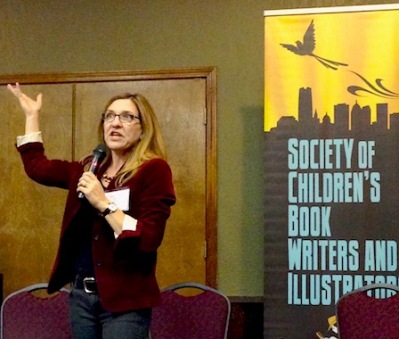
Linda also talked about using mentor texts – examples of good writing to be studied and imitated – to help you learn rhythm and sentence structure. You can tear apart these stories and study them; figure out how they work. (Another reason to be reading!)
Here are some great examples she used:
1st Person POV
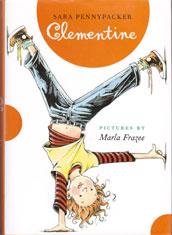 CLEMENTINE by Sara Pennypacker
CLEMENTINE by Sara Pennypacker
In this first book of the series, Clementine tries to help out her friend Margaret, but ends up in a lot of trouble for it. Things get worse each day of the week, until finally she’s worried that Margaret is right: Clementine’s parents might consider her “the hard one” in the family. They’re up to something mysterious…are they thinking they’d be better off if they only had her little vegetable-named brother…”the easy one”?
 THE BOOK THIEF by Markus Zusak
THE BOOK THIEF by Markus Zusak
It’s just a small story really, about among other things: a girl, some words, an accordionist, some fanatical Germans, a Jewish fist-fighter, and quite a lot of thievery. . . .
Set during World War II in Germany, Markus Zusak’s groundbreaking new novel is the story of Liesel Meminger, a foster girl living outside of Munich. Liesel scratches out a meager existence for herself by stealing when she encounters something she can’t resist–books. With the help of her accordion-playing foster father, she learns to read and shares her stolen books with her neighbors during bombing raids as well as with the Jewish man hidden in her basement before he is marched to Dachau.
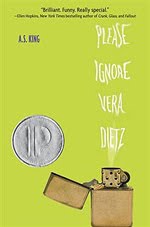 PLEASE IGNORE VERA DIETZ by A.S King
PLEASE IGNORE VERA DIETZ by A.S King
Eighteen-year-old Vera’s spent her whole life secretly in love with her best friend, Charlie Kahn. And over the years she’s kept a lot of his secrets. Even after he betrayed her. Even after he ruined everything.
So when Charlie dies in dark circumstances, Vera knows a lot more than anyone—the kids at school, his family, or even the police. But will she emerge and clear his name? Does she even want to?
2nd Person POV
 BLINK & CAUTION by Tim Wynne-Jones
BLINK & CAUTION by Tim Wynne-Jones
Boy, did you get off on the wrong floor, Blink. All you wanted was to steal some breakfast for your empty belly, but instead you stumbled on a fake kidnapping and a cell phone dropped by an “abducted” CEO, giving you a link to his perfect blonde daughter. Now you’re on the run, but it’s OK as long as you are smart enough to stay in the game and keep Captain Panic locked in his hold.
Enter a girl named Caution. As in “Caution: Toxic.” As in “Caution: Watch Your Step.” She’s also on the run from a skeezy drug-dealer boyfriend and from a night- mare in her past that won’t let her go. When she spies Blink at the bus station, Caution can see he’s an easy mark. But there’s something about this naive, skinny street punk, whom she only wanted to rob, that tugs at her heart, a heart she thought deserved not to feel.
 WHEN YOU REACH ME by Rebecca Stead
WHEN YOU REACH ME by Rebecca Stead
Miranda’s world forever.
By sixth grade, Miranda and her best friend, Sal, know how to navigate their New York City neighborhood. They know where it’s safe to go, and they know who to avoid. Like the crazy guy on the corner.But things start to unravel. Sal gets punched by a new kid for what seems like no reason, and he shuts Miranda out of his life. The apartment key that Miranda’s mom keeps hidden for emergencies is stolen. And then Miranda finds a mysterious note scrawled on a tiny slip of paper:I am coming to save your friend’s life, and my own.
I ask two favors. First, you must write me a letter.The notes keep coming, and Miranda slowly realizes that whoever is leaving them knows things no one should know. Each message brings her closer to believing that only she can prevent a tragic death. Until the final note makes her think she’s too late.
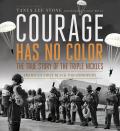 COURAGE HAS NO COLOR by Tanya Lee Stone
COURAGE HAS NO COLOR by Tanya Lee Stone
Many have heard of the Tuskegee Airmen, but few know of the 555th Parachute Infantry Battalion–the Triple Nickle. These were our first black paratroopers. They proved the black soldiers could do anything their white counterparts could do. They even fought a little-known attack on U.S. soil by the Japanese!
Learn how these men paved the way for other black soldiers in the Army, and integrated the Army 6 months before Truman’s Executive Order.
3rd Person POV
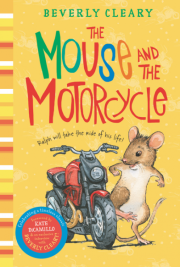 THE MOUSE AND THE MOTORCYCLE by Beverly Cleary
THE MOUSE AND THE MOTORCYCLE by Beverly Cleary
In this imaginative adventure from Newbery Medal-winning author Beverly Cleary, a young mouse named Ralph is thrown into a world of excitement when a boy and his shiny toy motorcycle check into the Mountain View Inn.
When the ever-curious Ralph spots Keith’s red toy motorcycle, he vows to ride it. So when Keith leaves the bike unattended in his room one day, Ralph makes his move. But with all this freedom (and speed!) come a lot of obstacles. Whether dodging a rowdy terrier or keeping his nosy cousins away from his new wheels, Ralph has a lot going on! With a pal like Keith always looking out for him, there’s nothing this little mouse can’t handle.
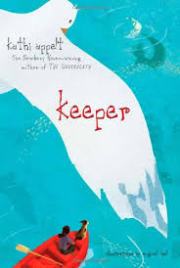 KEEPER by Kathi Appelt
KEEPER by Kathi Appelt
Keeper was born in the ocean, and she believes she is part mermaid. So as a ten-year-old she goes out looking for her mother—an unpredictable and uncommonly gorgeous woman who swam away when Keeper was three—and heads right for the ocean, right for the sandbar where mermaids are known to gather. But her boat is too small for the surf—and much too small for the storm that is brewing on the horizon.
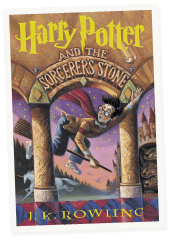 The Harry Potter Series by J.K. Rowling
The Harry Potter Series by J.K. Rowling
Harry Potter thinks he is an ordinary boy. He lives with his Uncle Vernon, Aunt Petunia and cousin Dudley, who are mean to him and make him sleep in a cupboard under the stairs. (Dudley, however, has two bedrooms, one to sleep in and one for all his toys and games.) Then Harry starts receiving mysterious letters and his life is changed forever. He is whisked away by a beetle-eyed giant of a man and enrolled at Hogwarts School of Witchcraft and Wizardry. The reason: Harry Potter is a wizard! The first book in the “Harry Potter” series makes the perfect introduction to the world of Hogwarts.
Omniscient POV
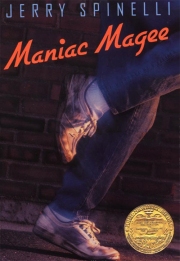 MANIAC MAGEE by Jerry Spinelli
MANIAC MAGEE by Jerry Spinelli
Jeffrey Lionel “Maniac” Magee might have lived a normal life if a freak accident hadn’t made him an orphan. After living with his unhappy and uptight aunt and uncle for eight years, he decides to run–and not just run away, but run. This is where the myth of Maniac Magee begins, as he changes the lives of a racially divided small town with his amazing and legendary feats.
 THE REAL BOY by Anne Ursu
THE REAL BOY by Anne Ursu
On an island on the edge of an immense sea there is a city, a forest, and a boy. The city is called Asteri, a perfect city that was saved by the magic woven into its walls from a devastating plague that swept through the world over a hundred years before. The forest is called the Barrow, a vast wood of ancient trees that encircles the city and feeds the earth with magic. And the boy is called Oscar, a shop boy for the most powerful magician in the Barrow. Oscar spends his days in a small room in the dark cellar of his master’s shop grinding herbs and dreaming of the wizards who once lived on the island generations ago. Oscar’s world is small, but he likes it that way. The real world is vast, strange, and unpredictable. And Oscar does not quite fit in it.
Feeling overwhelmed by all the choices? Here’s one final thing to consider:
“Part of deciding point-of-view is knowing the experience level of your readers.” – Linda Urban
I’ve barely brushed the surface of everything we learned. It was enlightening and educational, to say the least. If you get an opportunity to take in a workshop taught by Linda Urban, I highly recommend it.
Learn more about Linda by visiting her website: lindaurbanbooks.com
Follow Linda on Twitter @lindaurbanbooks.


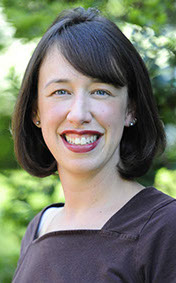 About Jennifer
About Jennifer
 Jennifer Mathieu: To be honest, I’m still surprised that I wrote a book and it got published. It took me seven years to publish my first novel. My first two manuscripts got very close but never sold. So I spent my debut year sort of in a haze that THE TRUTH ABOUT ALICE was not only getting published but was getting a very warm reception.
Jennifer Mathieu: To be honest, I’m still surprised that I wrote a book and it got published. It took me seven years to publish my first novel. My first two manuscripts got very close but never sold. So I spent my debut year sort of in a haze that THE TRUTH ABOUT ALICE was not only getting published but was getting a very warm reception. 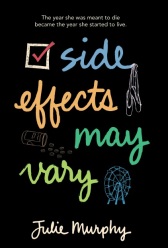 Julie Murphy: First, thank you! I am that horrible type of person who believes they can handle anything no matter how many times and how many people have warned them that the road ahead is difficult. There were so many incredible highs, but there were also so many lows that I never believed I’d actually experience or thought I was more emotionally equipped to deal with. I’ve learned that no matter how sane you are, planning a wedding or large family function can turn you into a special kind of crazy.
Julie Murphy: First, thank you! I am that horrible type of person who believes they can handle anything no matter how many times and how many people have warned them that the road ahead is difficult. There were so many incredible highs, but there were also so many lows that I never believed I’d actually experience or thought I was more emotionally equipped to deal with. I’ve learned that no matter how sane you are, planning a wedding or large family function can turn you into a special kind of crazy.  Jennifer: I will say writing my second novel, DEVOTED, was very difficult for me. I really had that classic experience you hear about where your debut is warmly received and you feel total paralysis with the second book. I ended up completely throwing out the first draft of DEVOTED and rewriting it from scratch. I was incredibly late on every deadline which is so not me. I cried multiple times.
Jennifer: I will say writing my second novel, DEVOTED, was very difficult for me. I really had that classic experience you hear about where your debut is warmly received and you feel total paralysis with the second book. I ended up completely throwing out the first draft of DEVOTED and rewriting it from scratch. I was incredibly late on every deadline which is so not me. I cried multiple times.  Julie: I was totally blind when I wrote my debut. I didn’t know what I was doing wrong or what I was doing right. Because of my huge ego, I assumed that if it didn’t feel off, it must all be perfect.
Julie: I was totally blind when I wrote my debut. I didn’t know what I was doing wrong or what I was doing right. Because of my huge ego, I assumed that if it didn’t feel off, it must all be perfect. 








